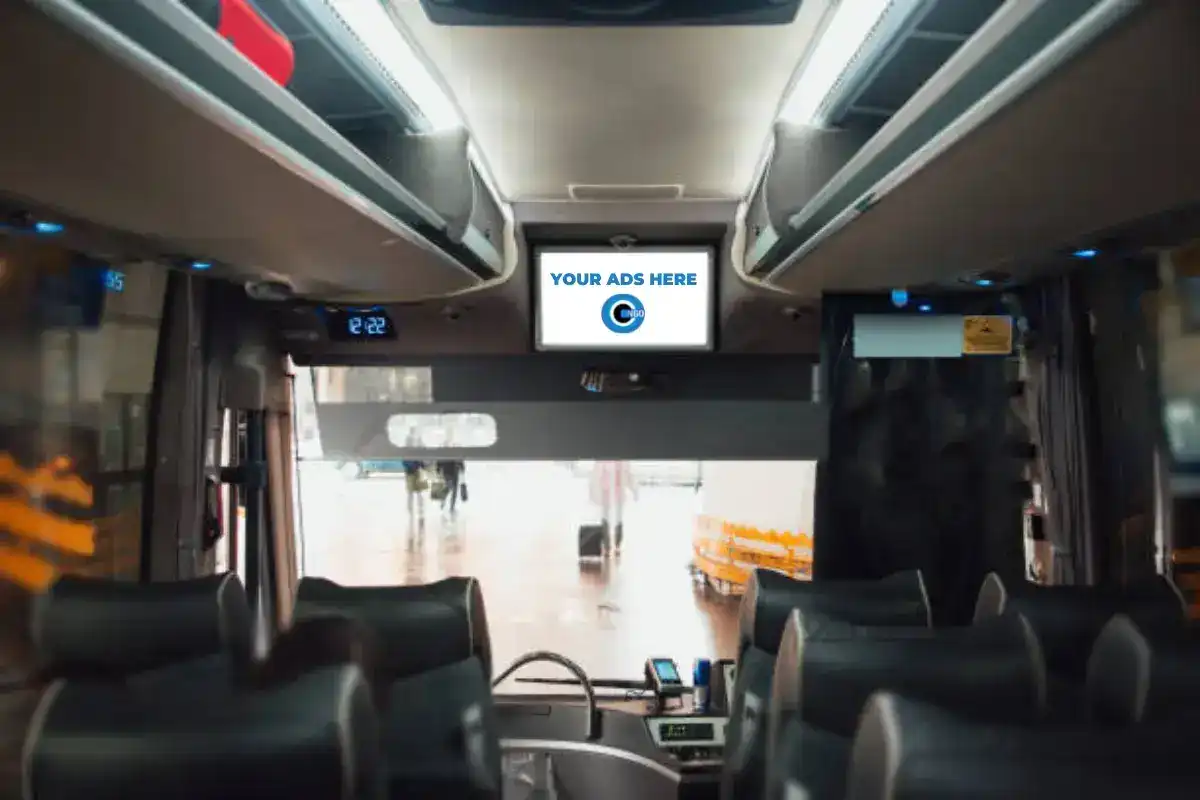Comprehending the Role of Transportation Advertising in Enhancing Brand Presence and Customer Interaction
Transit advertising and marketing has arised as a crucial element in the advertising landscape, providing special chances for brands to raise their visibility and engage consumers successfully. With the capability to reach a captive and varied audience during their everyday commutes, these advertising techniques are not just about visibility; they have to do with creating purposeful connections with prospective customers. As we check out the multifaceted benefits and innovative strategies within transportation advertising, it becomes vital to take into consideration exactly how these elements collectively influence consumer perception and habits, raising concerns regarding their lasting effect on brand commitment.
Interpretation of Transportation Marketing
Transportation advertising and marketing describes the method of advertising products, services, or brand names with ads positioned around public transport systems. This kind of advertising and marketing incorporates a range of placements, including posters on buses and trains, digital screens at transit stations, and wraps on the exterior of lorries. It intends to reach a varied audience, utilizing on the high foot website traffic related to public transit.
Transit advertising and marketing is purposefully positioned to record the interest of commuters, that commonly spend substantial time waiting or traveling. By integrating promotions into the daily regimens of individuals, brand names can produce a lasting impact and foster brand name acknowledgment. The medium is especially effective in metropolitan settings, where public transportation is a primary mode of travel.
Furthermore, transportation advertising and marketing can help with local targeting, allowing companies to get to particular demographics based upon transit routes and terminal locations. As metropolitan populations grow and the usage of public transport increases, this advertising and marketing technique has actually gained importance as an important element of incorporated advertising and marketing methods. The vibrant nature of transit marketing, combined with its capacity to involve customers in a restricted atmosphere, underscores its relevance in contemporary advertising and marketing methods.
Advantages of Transportation Advertising And Marketing
The efficiency of transit advertising and marketing depends on its capability to provide a plethora of benefits to brands looking for to boost presence and engagement. Among the key benefits is the considerable reach it provides; transportation ads can properly target varied demographics across metropolitan locations, reaching both commuters and pedestrians alike. This wide direct exposure substantially improves brand understanding.
One more benefit is the high regularity of impressions. As transit vehicles travel along recognized courses and quit at several places, they produce recurring direct exposure that enhances brand messages. This regularity fosters knowledge, which is crucial in customer decision-making.
Transit marketing is also economical compared to various other media systems. Provided its expansive reach and potential for high perceptions, brand names commonly experience a reduced expense per thousand impressions (CPM), maximizing their advertising and marketing spending plan.
Moreover, transportation ads can create a sense of area connection. By aligning with regional transit systems, brands can reverberate with local audiences and cultivate a sense of local pride. This local technique improves brand name loyalty and engagement, making transit marketing an engaging choice for organizations intending to strengthen their presence in the market.

Efficient Techniques for Transit Projects
To optimize the impact of transportation campaigns, brands need to utilize tactical preparation and execution customized to their target market. Initially, determining the demographic features of the target market making use of public transportation is critical. This enables brands to develop customized messaging that resonates with possible clients.
Following, choosing the right transportation mediums is necessary. Whether utilizing bus wraps, train posters, or electronic displays, each medium has one-of-a-kind advantages that can improve visibility. For example, vivid visuals on bus covers can draw in interest, while electronic ads can be updated frequently to reflect timely promotions.
Furthermore, integrating a cohesive branding strategy throughout transit systems makes sure consistency and reinforces the brand's identification. Using captivating styles and unforgettable taglines will certainly enhance brand name recall amongst commuters.
Finally, timing is a key element in performing successful transportation projects. Launching projects during peak travel hours or local occasions can considerably increase visibility and interaction. By using these strategies, brand names can effectively harness the capacity of transit marketing, promoting greater understanding and link with their target audience. Eventually, a well-executed transportation campaign can drive considerable growth in brand visibility and consumer interaction.

Gauging Effect and Involvement
In assessing the effectiveness of transit ad campaign, accurate dimension of influence and involvement is important for brands seeking to enhance their advertising techniques. Metrics such as reach, regularity, and impacts give fundamental information to examine visibility. Analyzing these variables assists identify the number of prospective consumers are revealed to the promotions during their everyday commutes.
Involvement can be additional assessed with consumer interactions, such as website web traffic, social media points out, and direct responses to calls-to-action included in the ads. Utilizing devices like QR codes or one-of-a-kind Links can facilitate tracking of customer habits directly connected to transit campaigns. Studies and responses mechanisms likewise function as important methods to collect qualitative data on customer perceptions and recall of the advertisement.
Additionally, progressed analytics and acknowledgment models can associate transit direct exposure with succeeding buying habits, using insights into the roi. By utilizing a detailed approach that incorporates qualitative and measurable actions, brands can develop a nuanced understanding of their additional hints transportation advertising and marketing influence. Ultimately, this data-driven approach enables brands to fine-tune their campaigns, guaranteeing they resonate effectively with target audiences and boost overall brand name presence.
Study of Effective Projects
Successful transit marketing campaigns offer as engaging instances of exactly how effective approaches can elevate brand name exposure and involvement. Transit Advertising Philippines. One remarkable situation is the "I Love New York" project, which transformed the city's photo and brought in millions of visitors. By using subway advertisements, billboards, and bus covers, the campaign produced a solid, cohesive brand name identity, leading to a considerable uptick in tourist and regional service patronage
Another exemplary project is Coca-Cola's "Share a Coke" initiative, which leveraged transit advertising to customize the brand name experience. By featuring prominent names on advertising products throughout different transportation platforms, Coca-Cola promoted a deeper psychological connection with customers, encouraging them to share their experiences on social media sites.
Furthermore, the "Got Milk?" campaign successfully utilized public transport advertisements to get to a broad target market, enhancing the message of the value of milk in a balanced diet plan. The campaign saw a measurable boost in milk intake in target demographics.
These case research studies illustrate that when executed thoughtfully, transit advertising can significantly boost brand visibility, foster consumer involvement, see this and drive measurable outcomes, showing its important duty in modern advertising and marketing strategies. - Transit Advertising Philippines
Final Thought
In final thought, transportation advertising acts as an essential tool for enhancing brand name presence and fostering consumer involvement. By utilizing tactically positioned promotions within mass transit systems, brands can properly reach diverse audiences and strengthen recognition through constant exposure. The execution of targeted messaging and innovative approaches additionally intensifies the effect of transit projects. Inevitably, the ability to measure interaction and examine effective study highlights the performance of transportation advertising in driving brand loyalty and consumer interactions.
Transportation advertising and marketing has actually arised as a critical aspect in the advertising landscape, using distinct opportunities for brands to raise their exposure and engage customers properly.Furthermore, transportation marketing can help with localized targeting, permitting companies to reach details demographics based on transportation routes and terminal places.In evaluating the performance of transit advertising and marketing projects, accurate dimension of effect and involvement is essential for brand names seeking to maximize their use this link advertising approaches.Effective transportation advertising and marketing projects offer as compelling examples of how effective strategies can raise brand name visibility and interaction.In verdict, transit advertising offers as an important device for enhancing brand name presence and promoting customer engagement.